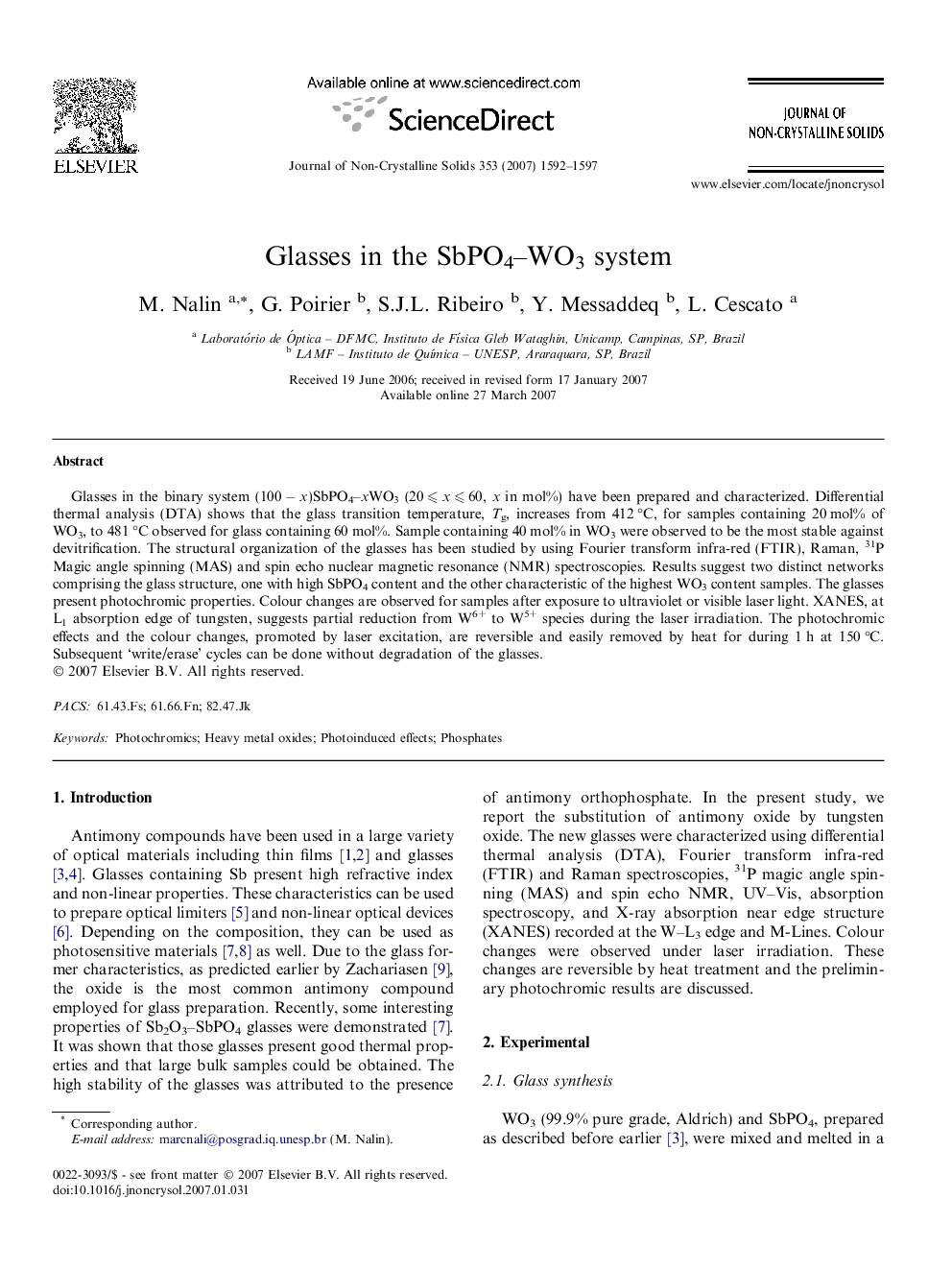| Article ID | Journal | Published Year | Pages | File Type |
|---|---|---|---|---|
| 1483600 | Journal of Non-Crystalline Solids | 2007 | 6 Pages |
Glasses in the binary system (100 − x)SbPO4–xWO3 (20 ⩽ x ⩽ 60, x in mol%) have been prepared and characterized. Differential thermal analysis (DTA) shows that the glass transition temperature, Tg, increases from 412 °C, for samples containing 20 mol% of WO3, to 481 °C observed for glass containing 60 mol%. Sample containing 40 mol% in WO3 were observed to be the most stable against devitrification. The structural organization of the glasses has been studied by using Fourier transform infra-red (FTIR), Raman, 31P Magic angle spinning (MAS) and spin echo nuclear magnetic resonance (NMR) spectroscopies. Results suggest two distinct networks comprising the glass structure, one with high SbPO4 content and the other characteristic of the highest WO3 content samples. The glasses present photochromic properties. Colour changes are observed for samples after exposure to ultraviolet or visible laser light. XANES, at L1 absorption edge of tungsten, suggests partial reduction from W6+ to W5+ species during the laser irradiation. The photochromic effects and the colour changes, promoted by laser excitation, are reversible and easily removed by heat for during 1 h at 150 °C. Subsequent ‘write/erase’ cycles can be done without degradation of the glasses.
